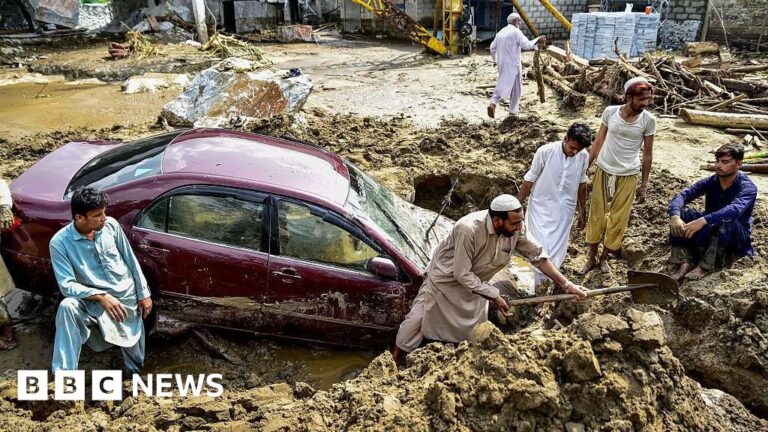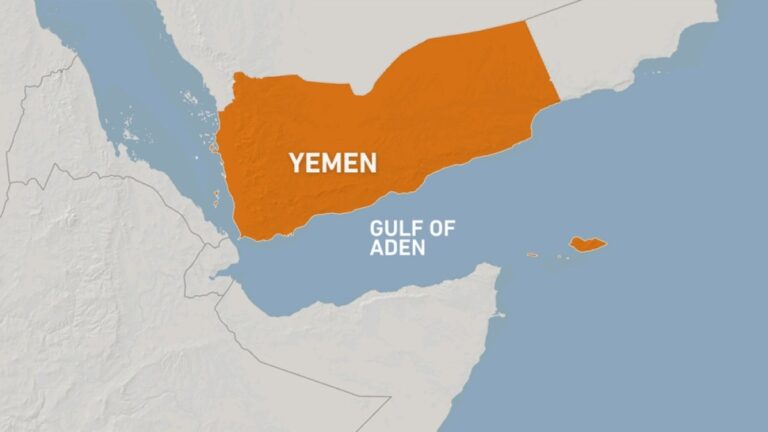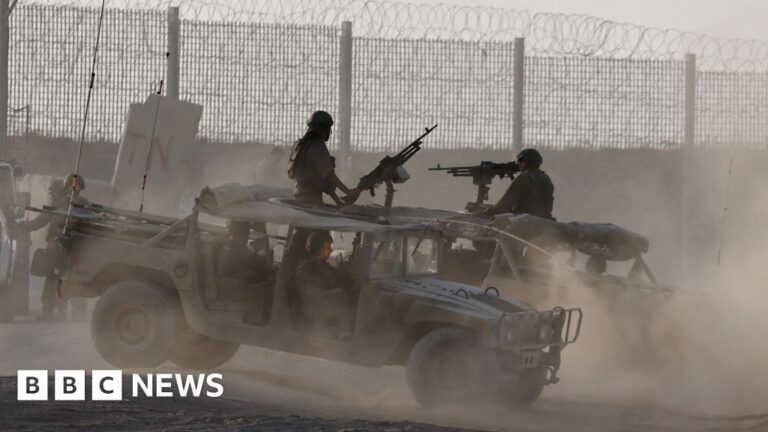Air Canada union says flight attendants will continue strike, defy government
Josh Liendo, Canadian Olympic silver medalist, throws the opening pitch at a Toronto Blue Jays game.
By Spencer Penland on SwimSwam

Canadian Olympic silver medalist Josh Liendo threw the opening pitch at the Toronto Blue Jays’ game against the Texas Rangers last night at the Rogers Centre in Toronto.
https://t.co/ZCR9nnihRA @Braden_Keith
Liendo on the mound pic.twitter.com/rvhHiRFBpp— Canada’s Fastest Swim Dad (@realABswim_tri) August 17, 2025
Liendo recently returned home from the World Championships in Singapore, where he topped out with a 4th place finish in the men’s 100 fly. He also earned a bronze medal on Canada’s mixed 4×100 medley relay, on which he played a critical role, splitting 49.64 on the fly leg.
Prior to his LCM achievements this season, Liendo concluded yet another exceptional NCAA season for the Florida Gators. He won the yards 100 free in 39.99, marking his 3rd consecutive NCAA title in the event. Liendo also won the 100 fly for the 2nd year in a row and came in 2nd in the 50 free. He also helped Florida’s 400 medley relay to victory at NCAAs with a 42.46 split on the fly leg.
Perhaps most notably, Liendo is also an Olympic silver medalist, having earned the silver medal in the men’s 100 fly at the 2024 Olympics in Paris last summer. He swam his career best of 49.99 to win that medal, also establishing the Canadian Record in the event. Speaking of which, Liendo also holds the Canadian Records in the men’s LCM 50 free (21.48) and SCM 50 free (20.76).
Liendo may have been a good luck charm last night, as the American League-leading Blue Jays routed the Texans 14-2. That win marks Toronto’s 3rd in a row. The Blue Jays conclude their series against the Texas today at 1:37 E.T.
Read the full story on SwimSwam: Canadian Olympic Silver Medalist Josh Liendo Throws Opening Pitch at Toronto Blue Jays Game
This Wave-Powered Desalination Plant Floats on Water
A U.S. Energy Information Agency (EIA) study estimated that the energy generated by waves reaching the U.S. coast alone would be enough to cover 64% of the country’s energy consumption. Considering the potential of wave power, and the fact that the oceans account for 97% of the world’s water, it was only a matter of time before desalination plants based on ocean energy, whether wave, tidal, or wind power, were explored. A new prototype of a floating desalination plant confirms the interest in these sustainable technologies.
A floating desalination plant made from 170,000 plastic bottles
A Canadian company has demonstrated the feasibility of the concept through a modular desalination buoy system. The primary device consists of a floating platform anchored to the seabed with a pipeline that transports freshwater to shore.
Codenamed Iceberg class, the initial device uses wave energy to pump water under pressure into a reverse osmosis desalination system, which is the most widespread technology and sustainable among desalination plants. Once the seawater passes through a system of membranes, the salt is removed, with up to 50 cubic meters of water produced daily. This quantity is enough to cover the needs of one hundred families of four people.
However, the system is designed to be modular and scalable. On the one hand, several units can be installed side by side; on the other hand, there are units of different sizes. In addition to the current basic model, there are two smaller ones. The smallest one is intended as an easy-to-install platform for instant freshwater generation in case of humanitarian catastrophes in coastal areas. It would be the equivalent of this other portable desalination plant discussed recently.
In principle, the desalination plant can operate with waves reaching a minimum height of one meter, while the seabed must have a depth of between thirteen and thirty meters. In terms of dimensions, the Iceberg class machines are eight meters long by five meters wide and weigh eleven thousand kilograms.
The new floating desalination plants have been conceived with a circular economy focus from the outset. In addition to using wave power to pump the water and solar energy to control the onboard sensors, they are made mainly from recycled plastic. Specifically, the basic model recycles up to 170,000 plastic bottles. They are also equipped with meshes for environmental protection that prevent the desalination plant from sucking in marine life.

Finally, the developers claim that each unit has a useful life of fifteen to twenty years and only requires three to seven visits per year for maintenance. For now, the amount of freshwater produced is limited, and work is underway to develop floating desalination plants on an industrial scale. These first units should enter the testing phase during 2023.
Other floating desalination plant alternatives
Canadian desalination buoys are one of many initiatives proliferating in recent years. For example, the U.S. National Renewable Energy Laboratory (NREL) has been testing a prototype with promising results. Similar in design to a Zodiac-type inflatable boat, its system also harnesses wave energy to carry out the desalination process and pump the water to shore.
Another prototype of a floating desalination plant based on wave energy was recently installed in the Canary Islands, this time by a Norwegian company. The Gaia buoy, weighing 100 tons and seven meters in diameter, has been undergoing tests since 2022 in the port of Las Palmas de Gran Canaria. It is expected that, once the results of the experience are known, larger platforms with commercial applications will be installed.
As can be seen, these prototypes are, for the most part, at an experimental stage, although they may play a significant role in the freshwater challenge in the future.
If, besides floating desalination plants, you would like to know more about fully operational desalination technologies and their potential to meet humanity’s drinking water needs in the coming years, we recommend you check out this article. And, if you are interested in learning about the full potential of offshore renewable energies, such as tidal and wave power, you can check out this other article.
Source:
Marc Marquez makes history with sixth consecutive win at Austrian MotoGP | Motorsports News
Marquez continues his dominance of the 2025 season with a first Austrian GP crown as he closes in on the riders title.
Six-time MotoGP champion Marc Marquez has marked the 1,000th premier class race in history by winning the Austrian Grand Prix for the first time in his career to take a mammoth 142-point lead over his brother Alex in the championship.
Having won Saturday’s sprint from the second row, Marquez claimed the sprint-race double on Sunday for the sixth Grand Prix in a row. The Spaniard has been unbeaten since the British Grand Prix in May.
Not since 2014 had Marquez claimed six consecutive Grand Prix wins as he moves closer to a seventh MotoGP crown with nine rounds remaining in the 2025 season.
Gresini Racing rookie Fermin Aldeguer found late race pace to finish second while Aprilia’s pole sitter Marco Bezzecchi, who kept Marquez at bay for as long as he could, finished third. Alex Marquez finished 10th after serving a long-lap penalty.
“Super, super happy to finally take the first victory here in Austria,” Marc Marquez said.
“I’m happy with six victories in a row, but [I need to] keep focus. Next week, we have another race.”
Bezzecchi had claimed his first pole with Aprilia on Saturday, and despite finishing fourth in the sprint, this time he had the perfect launch to lead Francesco Bagnaia and Marc Marquez into turn one.
The two Ducatis went side by side on lap one when Marc Marquez briefly overtook his teammate, but Bagnaia did not relent and took the place back to stay in second.
However, Marc Marquez made the same move on the next lap to take second and set his sights on Bezzecchi, waiting for the right opportunity to pounce.
“In the first part he [Bezzecchi] was super strong, but then I just waited. I tried in the beginning, but it was too risky. Then I preferred to wait and attack in the end,” the winner added.
Alex Marquez had a poor start, and with a long-lap penalty to serve for causing a crash at the Czech Grand Prix, the younger Marquez sibling fell out of the top 10 when he rejoined the field.
Marquez pressure
Bezzecchi soaked up the pressure, but the Aprilia rider was unable to shake off the red Ducati hunting him down.
Bagnaia was struggling with his bike, and he eventually faded, giving way to KTM’s Pedro Acosta and Aldeguer as the two youngsters fought for third.
Bagnaia had been undefeated in Austria for three years, but he was a shadow of the ringmaster who had dominated at the Red Bull Ring since 2022 as he was bumped down to eighth.
Marquez finally attacked on lap 19 and squeezed past the Aprilia, but Bezzecchi put his head down and took first place back from the Spaniard, eager to deny him a first victory at the Red Bull Ring.
But Marquez was on the ascendancy, and he finally broke Bezzecchi’s resistance on the next lap, using the Aprilia’s slipstream to dive into turn one and take the lead.
As Bezzecchi made a futile attempt to reel Marquez in, Aldeguer made a play for second place, and the Gresini rookie made his move with five laps to go on turn one to slot in behind Marquez.
Marquez responded to the challenge and kept Aldeguer at bay to take the chequered flag, but the rookie was over the moon with his best result in MotoGP.
“I’m super happy because at the end, Austria is not one of my favourite tracks like Le Mans,” he said. “Making two podiums on bad tracks for me is incredible.”
The 14th round of the MotoGP world championship will be held at Balaton Park in Hungary next weekend.

Former FBI cyber leader warns: The critical cybersecurity law safeguarding America is on the verge of expiration
The clock is ticking toward September 30, 2025, when one of America’s most vital cybersecurity protections will expire unless Congress acts. The Cybersecurity Information Sharing Act of 2015 (CISA 2015) has quietly become the backbone of our nation’s cyber defense. Without creating any additional regulations, it enabled the rapid sharing of threat intelligence between government and businesses that has prevented countless cyber attacks over the past decade. The Act’s protections have facilitated threat warnings to thousands of organizations just this year. Its potential sunset threatens to unleash a wave of cyberattacks that will devastate the small and medium-sized businesses (SMBs) that form a foundational part of our economy.
As someone who has worked on both sides—first leading public-private partnerships at the FBI and now facilitating industry collaboration—I’ve witnessed firsthand how CISA 2015 transformed our cybersecurity landscape. The law provides crucial liability protections that encourage companies to share threat indicators with the government and each other, while offering antitrust protection for industry-to-industry collaboration. Without these safeguards, the robust information sharing that has made American networks more secure simply stops.
The SMB Crisis Waiting to Happen
The consequences of letting CISA 2015 lapse will fall most heavily on America’s small and medium-sized businesses. Recent data from NetDiligence’s 2024 Cyber Claims Study shows that ransomware cost SMBs an average of $432,000 per attack. These businesses don’t have the cash reserves to weather extended downtime. At most, many can only survive three to four weeks of operational disruption before facing permanent closure.
According to industry analysis, small and medium enterprises represent 98% of cyber insurance claims while accounting for $1.9 billion in total losses, underscoring their vulnerability in today’s threat landscape. CISA 2015’s expiration will significantly weaken the early warning system that has helped businesses stay ahead of emerging threats. Without the government’s ability to share robust intelligence about new attack methods, SMBs become sitting ducks for cybercriminals who specifically target organizations that can’t afford to lose days or weeks.
Healthcare: Where Cybersecurity Becomes Life and Death
The stakes become particularly dire in healthcare, where ransomware attacks don’t just threaten profits—they threaten lives. The University of Minnesota School of Public Health’s experts estimate that ransomware attacks killed 42 to 67 Medicare patients between 2016 and 2021. These numbers represent a horrifying trend: threat actors deliberately target hospitals because they know healthcare systems will pay quickly to avoid putting patients at risk.
If information sharing degrades after CISA 2015’s sunset, hospitals–and all other critical infrastructure–very likely will lose crucial early warnings about ransomware variants and other attack methods. When a hospital’s systems are threatened, rapid information sharing matters. Minutes count in medical emergencies, and delays can be fatal.
Economic Ripple Effects
The economic impact extends far beyond individual companies. SMBs make up the vast majority of (99%) businesses in the U.S., and employ nearly half of the private sector’s workforce. According to the U.S. Chamber of Commerce, they’re responsible for 43.5% of our GDP, so their widespread failure would create devastating ripple effects throughout the economy.
More concerning, America’s technological leadership depends on the robust threat intelligence sharing that CISA 2015 enables. Our cybersecurity companies lead the world precisely because they have access to comprehensive threat data that helps them develop superior products and services.
Other countries modeled its cybersecurity information sharing after our system, recognizing that America’s approach gives us a competitive advantage. If we allow this framework to collapse, we’re not just making individual businesses more vulnerable—we’re undermining the foundation of American cybersecurity leadership that other nations seek to emulate.
The Path Forward: Clean Reauthorization Now
There’s bipartisan agreement that CISA 2015 should be reauthorized, with experts from across the political spectrum recognizing its vital importance. DHS Secretary Kristi Noem has urgently called for reauthorization, emphasizing that public-private partnerships have grown stronger because of the information-sharing guidelines established in CISA 2015.
The cleanest path forward is a straightforward reauthorization while Congress works through any technical improvements. The core framework has proven its worth over a decade of operation, facilitating billions of dollars in prevented losses and creating a culture where information sharing is the default rather than the exception.
Beyond Politics: A National Security Imperative
In an era of political division, cybersecurity remains one of the few areas where Americans across the political spectrum can find common ground. We need to defend against constant attacks coming from the likes of Chinese actors using ransomware during SharePoint vulnerabilities to Iranian groups deploying ransomware as a political weapon to hundreds of criminal ransomware groups operating at any given time.
The solution isn’t more regulation or government overreach. It’s the collaborative approach that CISA 2015 has fostered. As I used to tell businesses when I was at the FBI: we can’t help you if we don’t hear from others, and we can’t help others if we don’t hear from you. This principle of mutual aid and shared defense has made America stronger, and we cannot afford to abandon it now.
Congress must act before September 30. If we allow our cybersecurity information sharing framework to collapse it will devastate small businesses, endanger the sick, and undermine America’s position as the global leader in cybersecurity. The time for action is now, before the attacks that could have been prevented become the disasters we failed to stop.
The opinions expressed in Fortune.com commentary pieces are solely the views of their authors and do not necessarily reflect the opinions and beliefs of Fortune.
Official reports over 200 individuals missing in a single district
More than 200 people remain missing in one district of north-west Pakistan as a result of devastating monsoon flooding and landslides, an official has said.
Flash floods have killed more than 300 people in Pakistan and Pakistan-administered Kashmir in recent days, with most of the deaths recorded in the mountainous Khyber Pakhtunkhwa province.
A local official in the worst-affected Buner district told the BBC that at least 209 people were still missing there, but it is feared that number could rise.
Rescue teams have buried eight unidentified bodies as there were no family members found alive to claim them, said Jehangir Khan, spokesman for the deputy commissioner office of Buner.
Some relatives are also unable to claim their relatives bodies’ as roads are severely damaged, he added.
A provincial rescue spokesman told news agency AFP that “10 to 12 entire villages” were partially buried.
Asfandyar Khattak, head of the provincial disaster management authority, said “dozens” of people were missing in Shangla district.
Monsoon rains between June and September deliver about three-quarters of South Asia’s annual rainfall.
While landslides and flash floods are common as a result, scientists say that climate change is making these weather events more intense and more frequent.
Torrential rain has also hit Indian-administered Kashmir, days after at least 60 people were killed there by flash floods.
Nine were killed in Pakistan-administered Kashmir this week, while another five died in the northern Gilgit-Baltistan region, authorities said.
Government forecasters say heavy rainfall is expected until 21 August in the north-west, where several areas have been declared disaster zones.
Pakistan has been reckoning with the devastation of this year’s monsoon season since June. At least 650 people have been killed so far this year.
In July, Punjab, home to nearly half of Pakistan’s 255 million people, recorded 73% more rainfall than the prior year and more deaths than in the entire previous monsoon season.
Northern Pakistan is also one of the most glaciated areas in the region, but these are rapidly thinning and retreating because of climate change – meaning rocks, soil, and other debris can be dislodged.
Monsoon rains can further destabilise mountain faces, exacerbating landslides that sometimes block rivers.
While the exact cause of the recent floods and landslides are yet to be determined, glaciologists say that ice melt is a contributing factor.
Eminem’s ‘Stans’ Documentary Set to Premiere on Paramount+ on August 26th
Paramount+ will exclusively stream Stans, an Eminem-produced documentary exploring obsessive fandom, starting August 26.
The exclusive streaming debut follows a four-day theatrical run at AMC Theatres locations across the US from August 7 to 10.
The film, directed by Emmy-winning Steven Leckart, examines the relationship between the rapper and his devoted fans through interviews and archival footage. The documentary takes its name from Eminem‘s 2000 track about an unstable fan, a song that introduced the term “stan” into popular culture and eventually the Oxford English Dictionary in 2017.
Leckart said: “’Stan’ is one of the most unconventional songs ever written, where the story is mostly told from a fan’s perspective, so this film was an incredible opportunity to find a unique approach.”
Following the debut on Paramount+ in the US, Canada, Latin America and Brazil on August 26, the UK, Australia, Italy, France, Germany, Switzerland and Austria will gain access to the film on August 27. Japan will stream the documentary on October 3.
Shady Films, an offshoot film and TV production company established by Eminem and his manager Paul Rosenberg, partnered with DIGA Studios and Fuqua Films on the project.
Antoine Fuqua, who owns Fuqua Films, brings experience from successful projects including The Magnificent Seven, The Equalizer and Brooklyn’s Finest.
DIGA Studios, founded by former MTV executive Tony DiSanto, has built a portfolio spanning series like Teen Wolf and programs like Hot Ones: The Game Show.
“’Stan’ is one of the most unconventional songs ever written, where the story is mostly told from a fan’s perspective, so this film was an incredible opportunity to find a unique approach.”
Steven Leckart, Director
The production team also includes Bruce Gillmer, Amanda Culkowski, and Michael Maniaci as executive producers through MTV Entertainment Studios.
The documentary premiered at SXSW London earlier this year before a New York screening at Pier 17 on August 6 that featured a surprise appearance by Eminem.
Eminem has sold 164 million albums globally and accumulated over 110 billion streams across platforms. According to data from Nielsen SoundScan, Eminem’s album sales reached 32.2 million in the US alone during the 2000s.
His most recent record, The Death of Slim Shady, dropped on July 12, 2024. It marked his 11th straight studio album to debut at No. 1 on the Billboard Top 200.
Music Business Worldwide
Benjamin Netanyahu: Israeli Military Strikes Power Plant near Yemen’s Capital Sanaa
Israeli navy fires missiles at the energy facility south of Sanaa saying it was used by Houthis, but provides no evidence.
The Israeli navy has carried out attacks on a power plant near the Yemeni capital Sanaa, according to Israeli media reports.
Houthi-affiliated Al Masirah TV reported on Saturday that the “aggression” damaged generators at the Hezyaz power plant, sparking a fire that was later contained. The country’s deputy prime minister confirmed emergency crews managed to prevent further damage. Residents in Sanaa also reported hearing at least two loud explosions.
The Israeli military claimed that the site was being used by Houthi fighters. But it did not present evidence to justify hitting a civilian power station, raising concerns that the strike may constitute a war crime.
In a statement carried by Israeli outlets on Sunday, the military said the assault was a direct response to repeated Houthi attacks, including missiles and drones launched towards Israel.
The Houthis have repeatedly fired rockets and drones at Israel since 2023 in response to Israel’s genocide in Gaza. Israel has retaliated by bombing Yemen’s infrastructure, including Hodeidah port, a vital lifeline for humanitarian aid deliveries.
Israel has also attacked Yemen’s international airport, claiming it was being used by Houthis.
Most Houthi projectiles aimed at Israel have been intercepted, but the exchanges have widened the regional fallout of Israel’s war on Gaza.
The United States and the United Kingdom have also carried out bombings in Yemen as the Houthis attacked ships linked to Israel passing through the Red Sea. Houthis said the move, which disrupted global trade passing through the waterway, was in response to Israel’s war and blockade of Gaza.
In May, Washington announced a surprise truce with the group, halting its bombing campaign in exchange for an end to Houthi attacks on US-linked vessels in the Red Sea. The Houthis insisted the deal did not apply to their operations against Israel.
US forces had carried out hundreds of air raids in Yemen, killing more than 250 people, before the ceasefire was declared. US President Donald Trump said the truce would “stop the bombing”.
The deal appeared to blindside Israel, with Israeli Prime Minister Benjamin Netanyahu stressing his country would “defend ourselves alone” if necessary.
Client Challenge: Finding Solutions to Complex Problems
A required part of this site couldn’t load. This may be due to a browser
extension, network issues, or browser settings. Please check your
connection, disable any ad blockers, or try using a different browser.
Palestinians escape IDF assaults while Israelis demonstrate against occupation proposal
Thousands of residents have fled Gaza City’s southern Zeitoun neighbourhood, where days of continuous Israeli bombardment have created a “catastrophic” situation, the city’s Hamas-run municipality has told the BBC.
At least 40 people were killed by Israeli attacks across the territory on Saturday, Gaza’s civil defence agency said.
The Israeli military said it would begin allowing tents to be brought into Gaza by aid agencies again. Israel plans to forcibly displace a million people from Gaza City to camps in the south.
In Israel, a one-day general strike is due to be held in Sunday in protest of the government’s plan to seize Gaza City.
The stoppage was demanded by the families of hostages and others who say the expansion of the war puts the lives of Israelis being held by Hamas at greater risk.
It comes a week after Israel’s war cabinet voted to occupy Gaza City, the territory’s largest city, and displace its population, in a move condemned by the UN Security Council.
“As part of the preparations to move the population from combat zones to the southern Gaza Strip for their protection, the supply of tents and shelter equipment to Gaza will resume,” the Israeli military body Cogat said.
A spokesperson for the Gaza City municipality said mass displacement was already taking place in Zeitoun after six days of relentless Israeli air strikes, shelling and demolition operations.
The Zeitoun neighbourhood is home to about 50,000 people, most of whom have little to no access to food and water, according to the civil defence agency.
Ghassan Kashko, 40, who is sheltering with his family at a school building in the neighbourhood, told news agency AFP that air strikes and tank shelling were causing “explosions… that don’t stop”.
“We don’t know the taste of sleep,” he said.
Hamas said in a statement that Israeli forces had been carrying out a “sustained offensive in the eastern and southern neighbourhoods of Gaza City, particularly in Zeitoun”.
The Israeli government has not provided an exact timetable of when its forces would enter Gaza City. Israeli Prime Minister Benjamin Netanyahu is reported to want the entire city under Israeli occupation from 7 October.
The municipality spokesperson said that 80% of Gaza City’s infrastructure had been damaged over nearly two years of Israeli attacks, while the four remaining hospitals there were operating at less than 20% of their capacity due to severe shortages of medicines and supplies.
At least 1.9 million people in Gaza – or about 90 per cent of the population – have been displaced, according to the UN.
The international body has indicated there is widespread malnutrition in Gaza, with experts backed by the organisation warning last month in a report that the “worst-case scenario” of famine is playing out in Gaza.
On Saturday, Gaza’s hospitals reported 11 more deaths from malnutrition, including a child, bringing the total number of deaths from malnutrition to 251, including 108 children, according to the Hamas-run health ministry.
Meanwhile, a Gazan woman who was evacuated to Italy for treatment while severely emaciated has died in hospital. The 20-year-old, who was identified as Marah Abu Zuhri, flew to Pisa with her mother on an overnight flight on Wednesday under a scheme established by the Italian government.
The University Hospital of Pisa said that she suffered a cardiac arrest and died on Friday, less than 48 hours after arriving. The hospital said she had suffered severe loss of weight and muscle, while Italian news agencies reported she was suffering from severe malnutrition.
Earlier this week, the UK, EU, Australia, Canada and Japan issued a statement saying “famine is unfolding in front of our eyes” and urged action to “reverse starvation”.
Last week, more than 100 organisations signed a letter that said they had been unable to to deliver a single truck of humanitarian supplies to Gaza since 2 March.
Israel has drastically curtailed the amount of aid it allows into Gaza and continues to insist there is no starvation there. It accuses UN agencies of not picking up aid at the borders and delivering it.
The civil defence agency said at least 13 of the Palestinians killed on Saturday were shot by Israeli troops as they waited for food near distribution sites in the territory. The latest figures from the UN, released on Friday, indicate that at least 1,760 Palestinians have been killed seeking food since late May, mostly by Israeli forces.
The war was triggered by Hamas’s 7 October 2023 attack on Israel, which killed about 1,200 people and saw 251 others taken hostage.
Israel’s offensive has killed more than 61,000 Palestinians, according to figures from the Hamas-run Gaza health ministry, which the UN considers reliable.










